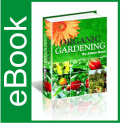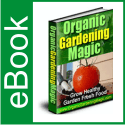The Problem Solving And Creating Cycle In A Traditional Garden And Elevated Vegetable Garden
The Problem Solving And Creating Cycle In A Traditional Garden And Elevated Vegetable Garden
Article by Alan Ross
Growing vegetables in a traditional garden method, requires a large amount of difficult work and attention. You must follow strict planting schedules along with weeding, feeding, and leaving the ground empty during cooler months. Many times green manure crops are planted in order to get the imbalanced soil back to growing condition, along with adding chemicals and inorganic fertilizers. Along with the time and work, it takes year round dedication to grow food with the traditional method. An elevated vegetable garden is a step in the correct direction, but many times falls into the same traps and detrimental cycles.
The question is; does it have to be that hard? Is this the only way to grow your own food?
The focus on traditional gardening is on problems from the beginning to the end. Gardening books are full of the problems and the ways to fix the problems. Most traditional gardeners after many years find that the solution to the problems cause a new set of problems. In other words, the problem with solving problems is that the solution can create more problems.
So, what are some of the problems with traditional gardening?
1. Traditional gardens have rows. Rows allow for empty spaces in between them. Empty spaces are invitation for something to grow, unfortunately weeds are very good at filling empty spaces.
2. Killing weeds usually involves chemicals which poisons the vegetables also, and end up in your body.
3. Using a hoe, disturbs the weed seeds and gets them started growing faster and more abundantly. It also breaks up the soil ecology.
4. The soil naturally has a dry, structureless layer on top like a skin. Traditional gardening will turn that soil and put it lower while taking the good soil underneath and bringing it to the top. Afterward the good soil becomes dry and structureless, thereby making the top layer of dry, structureless soil larger.
5. Structureless soil hold less water and requires more watering to keep the plants alive. Structureless soil also is less able to transfer nutrients to the plants and requires more fertilizer to build it up and keep the plants alive.
6. Many fertilizers kill the biology in the soil, and the soil becomes dead and lacks the correct nutrient balance to grow foods with the proper vitamins and nutrients.
7. Problems lead to more problems…. empty space leads to weeds; weeds leads to chemicals; chemicals leads to tainted food. Weeds leads to turning the soil; turning the soil leads to a larger area of dry soil which needs more watering, which spreads the chemicals. Turning the soil leads to breaking the soil biology which leads to needing more fertilizer. More fertilizer leads to dead soil which leads to nutrition deprived foods.
There is a way around this cycle of problem fixing and creating. In nature you will find a complete ecology without the problems faced by traditional gardening. An ecologically-based garden copies nature so that it looks and acts like a natural ecosystem. This system addresses many of the problems faced by traditional gardening. Such as, tilling, chemicals, lots of work, bugs and weeds, soil biology and structure, seeding, and crop rotation.
About the Author
For everything you need to know to break the cycle visit Alan’s site here: http://raisedbedsforvegetablegardens.com You will get information from an environmental scientist and horticulturalist on a unique way to grow bigger and better vegetables. Less work

 October 12, 2011
October 12, 2011 







